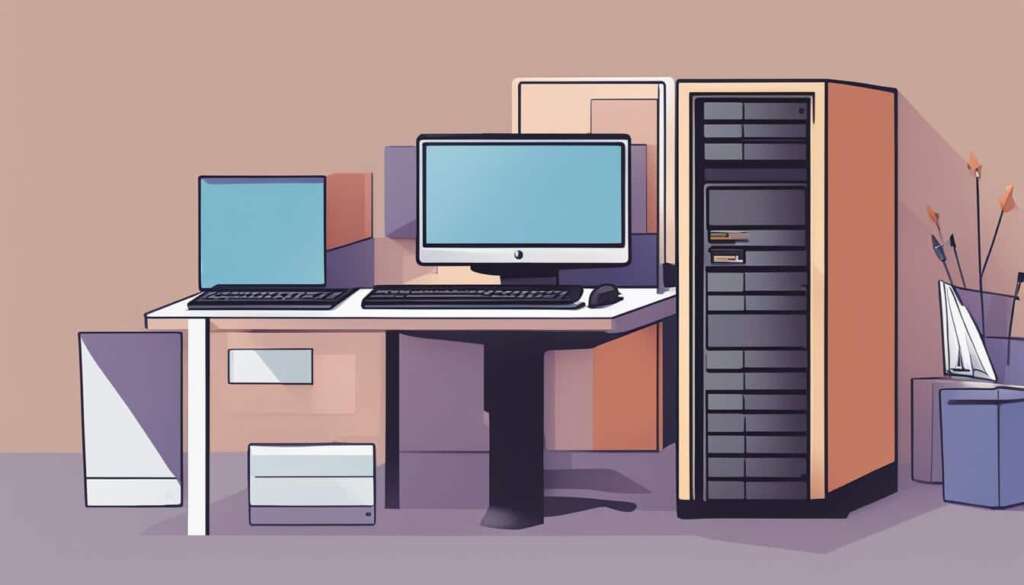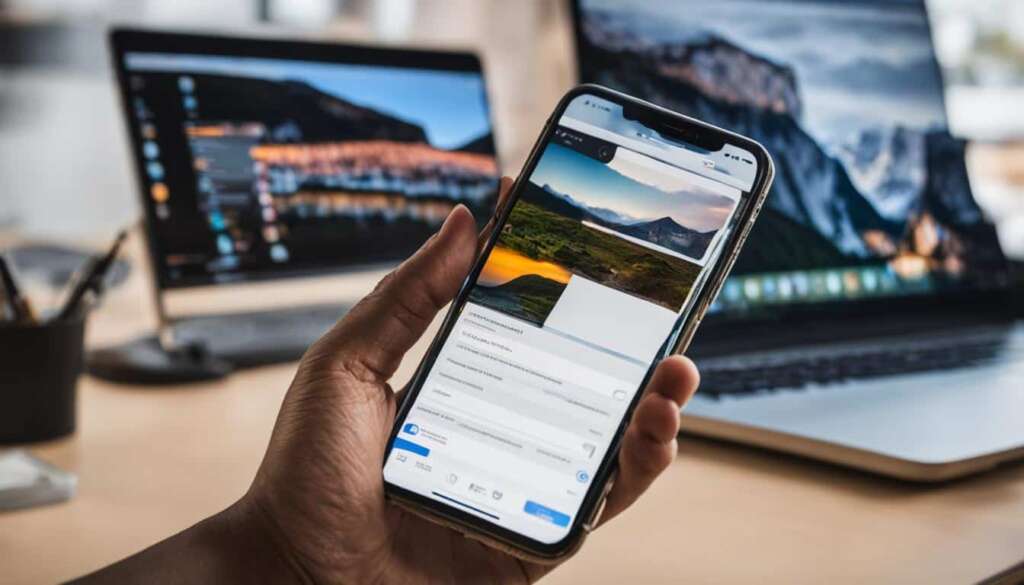Table of Contents
When building or setting up a new PC, one of the crucial steps is installing the operating system (OS). This step-by-step guide will walk you through the process of installing the OS on your new PC, ensuring a smooth and successful setup.
Whether you’re a tech enthusiast assembling your own PC or relying on a professional to build it for you, knowing how to install the OS is essential. In this guide, we will focus on the installation of Windows through a USB stick, providing clear instructions for each stage of the process. By following these steps, you’ll be able to complete the operating system installation efficiently and effectively.
Throughout this guide, we will cover everything from creating Windows installation media to backing up your files and the actual installation process. By the end, you’ll have a fully functional PC with your preferred operating system up and running.
Whether you’re setting up a new PC for work, gaming, or personal use, this guide will equip you with the knowledge to install the OS with confidence. Let’s get started with the first step: creating Windows installation media.
Creating Windows Installation Media
When it comes to installing Windows on a new PC, one of the first steps is to create Windows installation media. This process allows you to have a bootable USB flash drive or an ISO file that contains the necessary Windows installation files.
To create the installation media, you can use the MediaCreationTool provided by Microsoft. This tool can be downloaded from the official Microsoft website, ensuring that you are obtaining it from a reliable source.
Once you have downloaded the MediaCreationTool, you can run the application on your existing computer. The tool provides several options, including the ability to select your preferred language, edition, and architecture of Windows.
One of the choices you will have to make when creating the installation media is whether you want to use a USB flash drive or an ISO file. The USB flash drive option is more common and recommended, as it allows for a straightforward installation process by simply plugging the USB drive into the new PC.
However, if you prefer more flexibility, you can create an ISO file. An ISO file can be used to create a bootable DVD or even mount the file directly on a virtual machine. This can be useful if you want to install Windows on multiple computers or if you have specific requirements for your installation process.
Once you have made your selection and completed the creation of the installation media, you will be ready to proceed with the installation of Windows on your new PC. The media you have created will contain all the necessary files and tools to guide you through the installation process.
Summary:
- Create Windows installation media using the MediaCreationTool from Microsoft’s official website.
- Choose your preferred language, edition, and architecture of Windows.
- Select either a USB flash drive or an ISO file as the installation media.
- The USB flash drive option is recommended for a straightforward installation process.
- The ISO file option provides more flexibility and can be used for multiple installations or virtual machines.
| Option | Advantages | Disadvantages |
|---|---|---|
| USB flash drive | Easier and more convenient installation process | Requires a USB drive and may not be as flexible as the ISO file option |
| ISO file | Provides more flexibility for various installation methods | Requires additional steps for creating a bootable DVD or mounting the file on a virtual machine |
Backing Up Your Files
Before installing a new operating system on your PC, it is important to back up files that you want to keep. The installation process may involve formatting or erasing the hard drive, which could result in the loss of all your data. To prevent this, there are several methods you can use to ensure data protection and have your files safely backed up.
Cloud Storage Services
One of the easiest and most convenient ways to back up your files is by using cloud storage services. Platforms like Google Drive, OneDrive, and Dropbox offer free or subscription-based options that allow you to store your files securely online. Simply upload your important documents, photos, and videos to the cloud, and they will be accessible from any device with an internet connection. This method provides an extra layer of security and peace of mind, as your files are stored on remote servers protected by data encryption.
External Devices
Another option for backing up your files is to use external devices such as a hard drive, DVD drive, or USB flash drive. These physical storage devices allow you to create a local backup of your data, which can be easily restored after reinstalling Windows. Simply connect the external device to your PC and copy the files you want to back up onto it. This way, even if your computer’s hard drive is formatted during the Windows reinstallation process, your files will be safely stored on an external device and can be easily transferred back to your PC afterwards.
It’s better to be safe than sorry and ensure that your important data is protected.
Booting the Computer and Setting Up Windows
Once you have created the Windows installation media and backed up your files, it’s time to proceed with the installation process. To boot your computer from the USB flash drive, insert it into the designated USB port and restart the PC. During the boot-up process, you need to access the boot menu by pressing one of the following keys: F10, F11, F12, F2, or ESC. The specific key may vary depending on your computer’s manufacturer and model.
In the boot menu, select the USB flash drive as the boot device. This will initiate the Windows installer and launch the installation process. Follow the on-screen instructions to set up your Windows preferences, such as language and regional settings. If you have a product key, enter it when prompted. The product key is a unique alphanumeric code that validates your copy of Windows. Make sure to select the correct edition of Windows that you want to install.
Once the installation is complete, remove the USB flash drive from your computer. You can now proceed with the setup process, which includes selecting your preferred language, connecting to a network, and signing in to Windows. You can either sign in using a Microsoft account or create a local user account. A Microsoft account allows you to access additional features and services, while a local user account is limited to the local machine.
By following these steps to boot your PC and set up Windows, you can ensure a smooth installation process and customize your operating system to your preferences.
FAQ
How do I install the operating system (OS) on a new PC?
To install the OS on a new PC, you need to create Windows installation media. This can be done by downloading the MediaCreationTool from the official Microsoft website and selecting your desired language, edition, and architecture of Windows. Then, you can choose to create a USB flash drive or an ISO file as the installation media. Once the media is created, it can be used to install Windows on the new PC.
Should I back up my files before installing a new operating system?
Yes, it is highly recommended to back up any files you want to keep before installing a new operating system. The installation process may involve formatting or erasing the hard drive, which could result in the loss of all data. To prevent this, use cloud storage services like Google Drive, OneDrive, or Dropbox, or utilize external devices such as a hard drive, DVD drive, or USB flash drive to back up your files.
What should I do after creating the Windows installation media and backing up my files?
After creating the Windows installation media and backing up your files, insert the USB flash drive into the new PC and restart the computer. Access the boot menu by pressing the appropriate key (F10, F11, F12, F2, or ESC), select the USB flash drive from the boot menu, and the Windows installer will start. Follow the on-screen instructions to set up Windows preferences, enter your product key if available, and choose the edition of Windows you want to install. Once the installation is complete, remove the USB flash drive and continue with the setup process, including language selection, network connection, and signing in to Windows using a Microsoft account or creating a local user account.







